|
اولاً : سرقة الاعضاء البشرية فى بريطانيا :
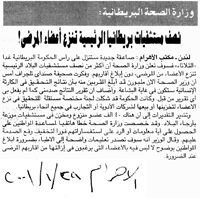
---------------------------------------------------------
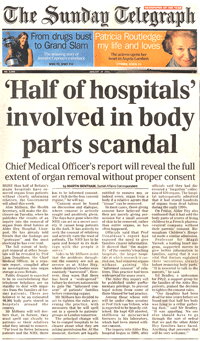
---------------------------------------------------------
ثانياً :
قصة
قتل مرضى الغيبوبة العميقة بأيدى الاطباء فى
مستشفى كليفلاند بالولايات المتحدة كما نشرت فى
الصحف الامريكية على لسان الشهود من الاطباء
( بالانجليزية )
و مقال لمراسلة أخبار اليوم (بالعربية) يشير الى
الضجة الوسعة التي حدثت في المجتمع الأمريكي عند
نشر الجريمة
THE HEART-STOPPING
TRUTH ABOUT ORGAN DONATION
Article by Steve Salerno
It's said that doctors bury
their mistakes. Sometimes they dissect them
first
“What the hell are they trying
to do, kill people?” The question stuck in
Cuyahoga prosecutor Carmen Man-no's head, and
his craw. It was the morning of September 10,
1996, and Marino had spent 90 minutes listening
to two of his constituents voice concerns about
a new medical protocol they had uncovered. The
procedure was about to be implemented at the
most august piece of medical real estate under
Marino's jurisdiction, the Cleveland Clinic.
Nearing the end of a successful three-decade
career, Marino had no desire to square off with
the clinic. But what he'd just heard led him to
a startling realization: that if the protocol
were implemented, he would file homicide charges
against the physicians at the Cleveland Clinic.
In attendance at the meeting
were graduate student Peggy Bargholt and
Bargholt's professor at Cleveland State
University, Mary Ellen Waithe, who also served
as the school's director of advanced studies in
bioethics. It was Bargholt who, the previous
fall, had learned of the new protocol.
Like Marino, Bargholt wasn't
looking for a fight. She'd always been a vocal
advocate of transplantation, and she had given
much more than lip service to the movement.
Fifteen years earlier her three-year-old had
died of a brain hemorrhage linked to a
congenital defect. She donated his organs and
became one of the first mothers to go public
with her story. Subsequently, Bargholt worked
for LifeBanc (a regional OPO) and spoke on
behalf of transplantation. She'd also put
considerable energy into Family Lodge, her
proposed low-cost hospice for patients and
families awaiting transplants at the Cleveland
Clinic.
Friends at LifeBanc told
Bargholt that the new protocol would save lives
by deepening the pool of potential donors. The
document's chief author was Dr. James Mayes, who
is director of LifeBanc and a top surgeon at the
clinic. Dr. Mayes had based his work on the
regimen used at the University of Wisconsin, the
so-called “church of transplantology.”
The deeper Bargholt got into the
document, the more uneasy she felt. The protocol
was designed for patients who had suffered
catastrophic head injuries and required
ventilator support
but were not yet certifiably
brain-dead. It recommended infusing such
patients with two drugs, Regitine and heparin.
Bargholt, a one-time nursing student, wondered
why they'd be giving such large doses of a blood
thinner like heparm to comatose patients with
cranial bleeding. Something else bothered her:
The protocol told doctors to
make decisions about the presence or absence of
a heartbeat by feeling for a pulse at the
carotid artery. She thought, My God, you're at
the Cleveland Clinic. Why go groping around
somebody's neck? Hook him up to a heart monitor!
Bargholt went on to read how
doctors would wheel patients into an operating
room and turn off the ventilator. The patient's
heart, deprived of oxygen, would stop. Two
minutes later, surgeons would begin the harvest.
Such patients would become, in the odd lexicon
of the transplantation community, NHBD —
non-heart-beating donors.
By the time she finished reading
the document, Bargholt felt shaky. She recalls,
“Under this protocol, I didn't know if the
patients would actually be dead when the surgery
started. And if they weren't, I couldn't get
past the thought that the transplant surgery
might be what killed them”
She made a presentation on the
protocol to her bioethics class. Waithe was
stunned. The two women resolved to get to the
bottom of things—albeit discreetly. This was,
after all, the Cleveland Clinic.
They soon learned that Regitine,
or phentolamine mesylate, was an obsolete blood
vessel dilator now used in minute dosages as an
injectable alternative to Viagra. It had fallen
out of favor in hospital settings because of its
severe side effects. Phentolamine could cause a
precipitous drop in blood pressure—and possible
cardiac arrest—even in its usual therapeutic
dosage of five milligrams. The protocol called
for twice that. Waithe's mention of the
phentolamine regimen to someone at the FDA
elicited this reaction: What are they trying to
do, kill people? Bargholt got the same response
from a friend who worked for the state pharmacy
board (which in Ohio has police powers not
unlike the DEA).
It became clear that neither
phentolamine nor heparin was the usual choice
for people with grave head injuries. For such
patients, the drugs could have disastrous
effects, flooding an already bloated cranial
cavity with more fluid while masking signs of
life by muting the carotid pulse—the pulse
doctors were told to feel for.
Convinced that they were onto
something, Bargholt and Waithe drafted a
critical paper for the Journal of the
American Medical Association. In
May 1996, the same month they submitted their
paper, they approached the Ohio attorney
general's office. They spent the next several
months trying to get a straight answer from both
parties. By mid-July JAMA had rejected the
article, while the attorney general's office was
giving them the “dog ate my homework” treatment,
says Waithe. The following month Bargholt's
contact at the pharmacy board arranged a meeting
with her supervisor. They all drove separately
to the Ohio boondocks. After a four-hour
cloak-and-dagger session that Waithe describes
as “right out of Silkwood,” the pharmacy board
representatives agreed that if procedures
outlined in the protocol were taking place, they
could be construed as criminal.
On September 10, Waithe and
Bargholt went to see Carmen Marino.
Marino and his staff spent the
ensuing weeks studying trauma care and
transplantation. The prosecutor discovered that
the mortal enemy of internal organs was a
condition called warm ischemia, or deprivation
of blood and oxygen due to diminished blood
flow. The longer an organ was deprived, the less
viable it was. He also learned that transplant
specialists measured viability in minutes, not
hours. It was crucial to keep organs bathed in
blood as long as possible. That explained why,
in brain-dead patients, surgeons allowed the
heart to continue beating even while they took
other organs. It also explained the proposed use
of phentolamine and heparin.
Marino contacted the
prosecutor's office in Madison, Wisconsin, whose
university's procedures had inspired the
LifeBanc document. “That's medical stuff,” he
was told, “we don't interfere.” Somebody else he
talked to shrugged the whole thing off. “It was
like, 'What's the big deal?” Marino recalls. “If
their respirators are turned off, they'll die
anyway, right?”
Marino knew that seriously
injured people often needed cardiorespiratory
support while their brains healed. In time, they
might return to full function. Or they might end
up grotesquely impaired. Or they might die. In
any case, he thought, what business did these
administrators have deciding whose life was
worth saving?
After satisfying himself that
the protocol hadn't yet been implemented—if it
had, he would have gone straight to the grand
jury—Marino requested a meeting. “I know doctors
and lawyers don't get along real well,” he says
now, “but let me tell you, there are some of the
most arrogant sons of bitches you'll ever come
across at the Cleveland Clinic.”
Marino said that the doctors
were outraged—at him, at the
“traitorous”Bargholt, at the fact that Marino's
office had the balls to go snooping around
without “consulting” them first. “This one guy
gets up and says, basically, 'How dare you
confront us on this. We're fainous doctors, and
this is our business. Who are you to tell us
what we can and can't do?' And he says how he's
going to 'challenge' us.
“I stared at him and said,
'Look, you can do that if you want. Just
understand, friend, that the challenge is going
to take place in a courtroom, with a charge of
homicide. And any doctor who participates in
operations under this new protocol will be an
accessory to that homicide!” Marino remembers
the way he and the doctor glared at each other
until someone on the clinic side finally said,
“Don't worry about it, Carmen, it's OK. We're
not going to go that route.”
Today, Marino says the clinic's
about-face allowed him to go into retirement
feeling vindicated. “Doctors shouldn't be in the
business of rounding down patients' lives to a
lower number,” he says. “People are entitled to
live until they actually die.”
For Bargholt, though, it was a
Pyrrhic victory. She stopped getting invitations
to transplantation functions. An erstwhile
friend accused her of being responsible for the
death of a teen who'd been awaiting a transplant
at the clinic but couldn't get one because the
scandal caused donations to drop. She was even
voted off the board of Family Lodge by some of
the same people she'd recruited as directors. “I
was blackballed,” she says, “because I wanted
doctors to make sure people were dead before
they took their organs.”
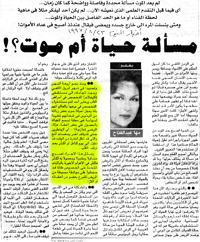
ثالثاً
:اختطاف الاطفال من الدول الفقرة ومن مناطق النزاع
لقتلهم و انتزاع اعضائهم :

---------------------------------------------------------
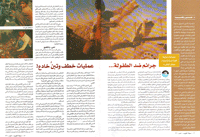
---------------------------------------------------------
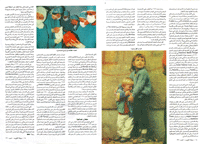
---------------------------------------------------------
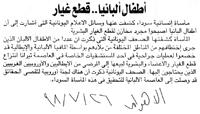
---------------------------------------------------------

---------------------------------------------------------
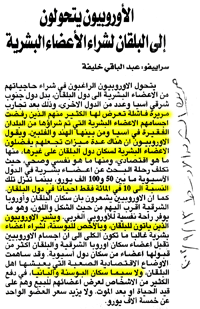
---------------------------------------------------------
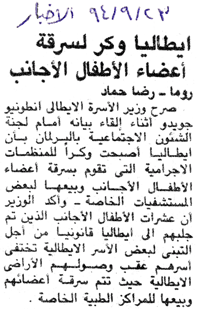
---------------------------------------------------------

---------------------------------------------------------

---------------------------------------------------------
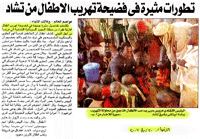
---------------------------------------------------------
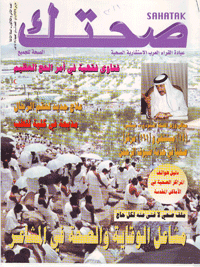
---------------------------------------------------------
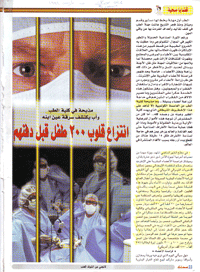
---------------------------------------------------------
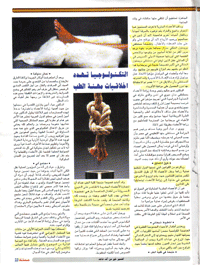
---------------------------------------------------------
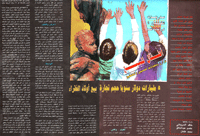
---------------------------------------------------------
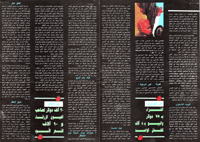
---------------------------------------------------------
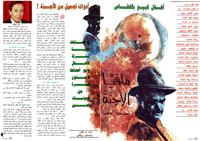
---------------------------------------------------------
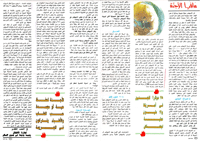
---------------------------------------------------------
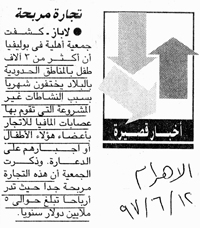
---------------------------------------------------------
قتل الاسرى لانتزاع اعضائهم :
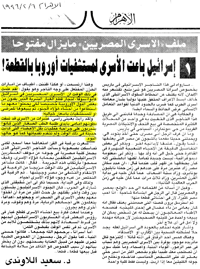
رابعاً : انتزاع
الاعضاء من المحكوم عليهم بالاعدام فى الصين وهم
احياء

---------------------------------------------------------
خامساً : قتل مرضى
الامراض العقلية لانتزاع اعضائهم :
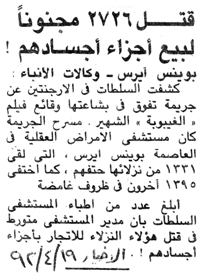
---------------------------------------------------------
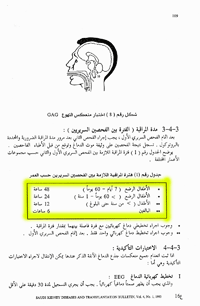
---------------------------------------------------------
المفهوم الثالث
من مفاهيم موت المخ(وهو موت المراكز العليا للمخ)
ينطبق على مرضى الامراض العقلية والحالة الخضرية
الدائمة و المواليد ناقصي القشرة المخية.. وبذلك
فان اكذوبة موت المخ تعطي مبرراً لارتكاب جريمة
انتزاع الاعضاء من مرضى الامراض العقلية و قتلهم
بحجة الحاجة الى اعضائهم .. راجع مفاهيم المخ
الثلاثة و هي موت كل المخ - موت جزع المخ - موت
المراكز العليا للمخ في المجلة السعودية لنقل
الاعضاء المرفقة
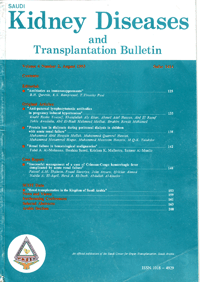 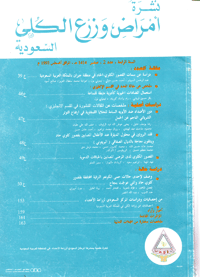
---------------------------------------------------------
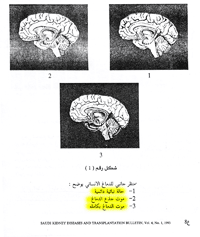 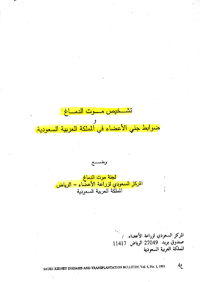
سادساً : محاولات
تحويل مصر الى مركز لبيع الاعضاء لاثرياء المنطقة
:
بنك العظام يهدف الى الوفاء باحتياجات
الدول العربية والافريقية :
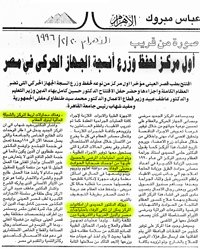
---------------------------------------------------------
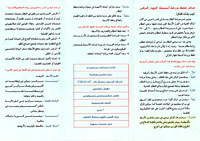
---------------------------------------------------------
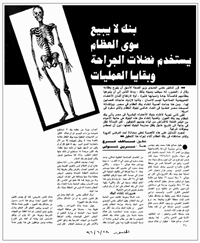
---------------------------------------------------------
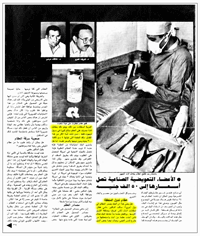
---------------------------------------------------------

---------------------------------------------------------
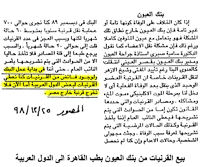
قائمة اسعار
العظام التي يبيعها البنك -
تجهيز
العظام و تقطيعها مثل البطاطس (الشيبسي)
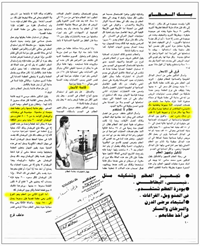
وزير الصحة
السابق (أ.د. اسماعيل سلام) يحذر من ان اي مشروع
قانون لنقل الاعضاء يسمح للمستشفيات الخاصة
والاستثمارية بنقل الاعضاء سوف يؤدي الى تحولها
الى سوق لتجارة الاعضاء
(محضر اجتماع مجمع البحوث الاسلامية) بتاريخ 24
ابريل 1997
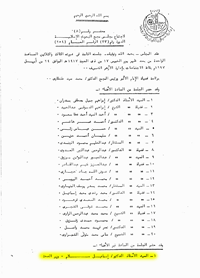 
---------------------------------------------------------
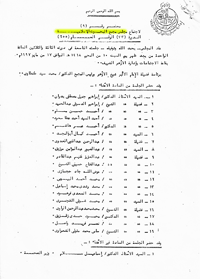 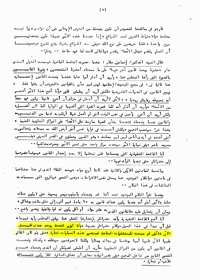
---------------------------------------------------------
سابعاً :
تجارة الاعضاء البشرية تمارس فى جميع دول العالم :
في
الهند :

فى اوكرانيا
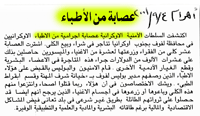
فى تركيا :
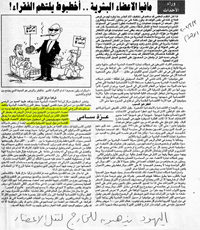
بين دول العالم على الانترنت

---------------------------------------------------------
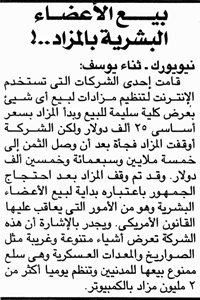
ثامناً
:
التسويق لتجارة الاعضاء فى كافة دول العالم
.. اعلانات فى الصحف المصرية تعرض على
المرضى المصريين زراعة الكبد فى المانيا بصورة
اسرع وارخص وتعد بتقديم التسهيلات !!

تاسعا : منظمات طبية
امريكية لنقل الاعضاء
تدعو الى اعطاء مقابل مادى للأهل
لأخذ موافقتهم على انتزاع أعضاء مريضهم ..
و اطباء نقل الاعضاء يطالبون في مجلات عالمية طبية
باباحة شراء الاعضاء من الاحياء دون قيود:

---------------------------------------------------------
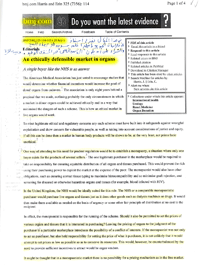
---------------------------------------------------------
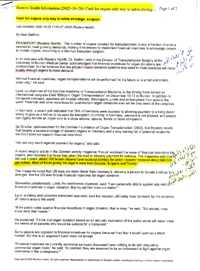
---------------------------------------------------------
عاشراً : بعض المنظمات الطبية العالمية تتراجع
أخيراً عن دعوتها لحرية تجارة الاعضاء بعد
ازدهارها و تورط الاطباء فيها :

---------------------------------------------------------
---------------------------------------------------------
|